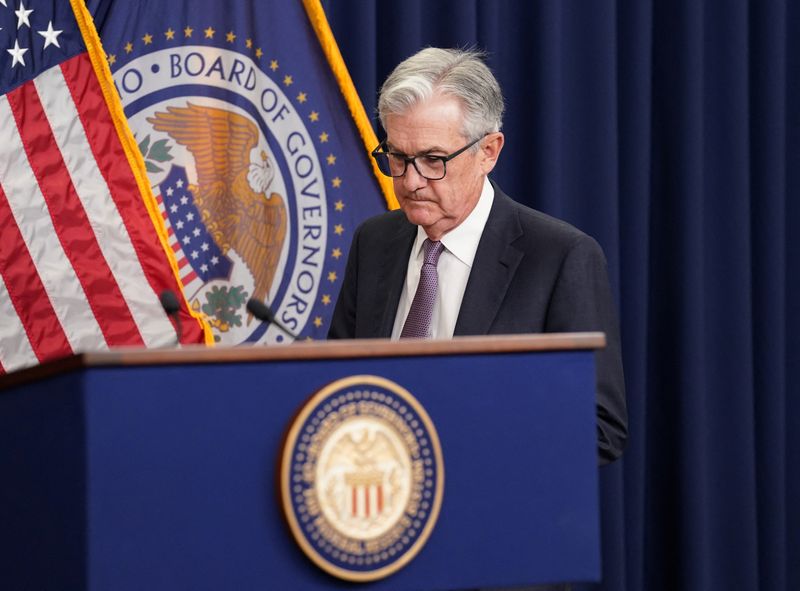(Reuters) - A look at the day ahead in Asian markets from Lewis Krauskopf
Investors in Asia could be waking up to more volatility after the Federal Reserve's latest jumbo rate increase and message about future hikes.
The U.S. central bank on Wednesday raised rates by 75 basis points for a third straight meeting as it is bent on taming the steepest surge in inflation in 40 years. That action was largely expected but may have offered some relief after markets had priced in a small chance of a mammoth 100-basis point hike.
Instead, it was what comes next that appeared to seize the market's attention. Another 125 basis points in hikes are now signalled for the last two meetings of 2022, with investors bracing for more to come early next year. New Fed projections show its policy rate topping out at 4.60% in 2023.
In his press conference following the Fed's statement, Chair Jerome Powell said achieving a soft landing for the economy is "very challenging." Policymakers see the need to lift the policy rate to a "restrictive level" and "keep it there for some time," Powell added.
Already-harried markets had trouble agreeing on a direction in the hours following the Fed's decision and Powell's ensuing comments.
Two-year U.S. Treasury yields burst well above 4% in the immediate aftermath of the Fed's statement but then eased closer to that level. Stocks dove, recovered, and then slid again, with the benchmark S&P 500 ending down 1.7%. The dollar index hit a fresh two-decade high, then edged back.
Digesting the Fed may take longer, as initial reactions to the central bank's meetings can be misleading. What's more, investors on Thursday will have other central bank actions to contend with, including in Japan, England and Switzerland.
Key developments that could provide more direction to markets on Wednesday:
Bank of Japan monetary policy decision
Taiwan, Indonesia central bank meetings

Bank of England policy decision
Swiss National Bank monetary policy meeting